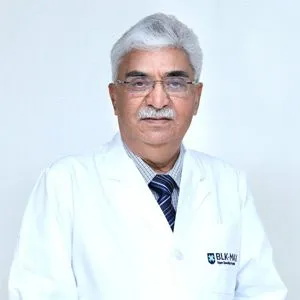Best Orthopedic Surgeons in Artemis Hospital Gurgaon
 17 December,2025
Read More
17 December,2025
Read More
Starting From: USD 1,443 - USD 4,210
Robotically Assisted Atrial Septal Defect Repair is affordable in India. The cost of Robotically Assisted Atrial Septal Defect Repair in India lies between USD 1,443 - USD 4,210. The exact procedure price depends on multiple factors such as the surgeon's experience, type of hospital, severity of the condition, patient's general condition,�etc.
Atrial Septal Defect (ASD) is a congenital heart condition characterized by a hole in the wall (septum) that separates the upper chambers (atria) of the heart. This opening allows oxygen-rich blood to flow from the left atrium to the right atrium, which can lead to a range of cardiac issues. While ASDs can often be managed with medication, larger defects may require surgical intervention. Robotically assisted ASD repair is an innovative approach that combines the precision of robotic technology with the skill of cardiac surgeons to provide patients with a minimally invasive and highly effective treatment option.
ASDs are a type of congenital heart defect that occurs during fetal development. In a healthy heart, the septum between the atria is fully closed, ensuring that oxygenated and deoxygenated blood do not mix. However, in individuals with ASD, this septal wall has an opening, which can lead to abnormal blood flow patterns and various cardiac symptoms.
The decision to undergo robotically assisted atrial septal defect (ASD) repair is made on a case-by-case basis, considering various factors. While this procedure can offer significant benefits, it is important to identify suitable candidates. Here are some scenarios where robotically assisted ASD repair may be particularly beneficial:
It's important to note that the final decision regarding robotically assisted ASD repair is made by the surgical team based on a comprehensive evaluation of the patient's specific circumstances. Additionally, alternative treatment options, such as catheter-based interventions or traditional open-heart surgery, may also be considered depending on the patient's unique situation.
While robotically assisted ASD repair offers many advantages, it is important to note that not all cases of ASD require surgical intervention. The decision to undergo this procedure is made after careful evaluation by the surgical team, taking into account the specific characteristics of the defect and the overall health of the patient.
As with any surgical procedure, there are potential risks associated with robotically assisted ASD repair, including bleeding, infection, and adverse reactions to anesthesia. Additionally, while rare, there may be specific risks related to the use of robotic technology.
Robotically assisted ASD repair exemplifies the marriage of cutting-edge technology with the expertise of cardiac surgeons. This innovative approach allows for precise and effective repair of atrial septal defects while minimizing the impact on the patient's body. By combining the advantages of minimally invasive surgery with the enhanced visualization provided by robotic technology, patients can experience a smoother recovery and a restored quality of life. With ongoing advancements in surgical techniques and technology, robotically assisted.

Chairman
Interventional Cardiologist
BLK-Max Super Speciality Hospital, New Delhi

Director
Cardiologist, Interventional Cardiologist
Max Super Speciality Hospital, Saket, New Delhi

Chairman
Cardiac Electrophysiologist, Interventional Cardiologist
BLK-Max Super Speciality Hospital, New Delhi

Consultant
Interventional Cardiologist
Indraprastha Apollo Hospital, New Delhi

Head of Department (HOD)
Cardiologist
Nanavati Super Specialty Hospital, Mumbai

Consultant
Interventional Cardiologist
Apollo Hospital Chennai, Greams Road
Doctor of Pharmacy
Dr. Deepanshu Siwach is a skilled clinical pharmacist with a Doctor of Pharmacy degree.?He has 4+?years of experience and has worked with thousands of patients. He has been associated with some of the top hospitals, such as Artemis Gurgaon.
Dr. Deepanshu Siwach is a skilled clinical pharmacist with a Doctor of Pharmacy degree.?He has 4+?years of experience and has worked with thousands of patients. He has been associated with some of the top hospitals, such as Artemis Gurgaon....
Dr. Aseem Ranjan Srivastava is an experienced Pediatric Cardiothoracic Surgeon specializing in Minimal Access and Robotic Cardiac Surgery. He strongly recommends prompt corrective repair when possible....
The Art of Effective Communication
 17 December,2025
Read More
17 December,2025
Read More
 16 December,2025
Read More
16 December,2025
Read More
 10 December,2025
Read More
10 December,2025
Read More
 09 December,2025
Read More
09 December,2025
Read More
 05 December,2025
Read More
05 December,2025
Read More
 04 December,2025
Read More
04 December,2025
Read More